Best known for making exceptional sparkling wines with extensive aging potential, Gramona is a winery that places the land and identity of the fruit above all else. With 370 acres of vineyard, Gramona practices biodynamic winemaking to grow and vinify fruit reflective of their estate terroir. Likewise, the cellar is designed to maximize efficiency and conserve energy, and the wines are carefully made with minimal intervention. A winery that strives for complete harmony from vineyard to cellar, Gramona has earned a reputation for making some of the most sought after sparkling wines in the world.



SINCE�2010
KEY�FACTS
CLIMATE: Mediterraneanclimatewithhot, drysummersandmoderatewinters.Average annualtemperature59°F(15°F)
ELEVATION:�3288to1,150feet (100to350m)
SOILS: Clayandcalcareousformationswith somealluvial,slatetowardMontserratMountain
CLASS: Corpinnat


VINE: 370totalacres(150ha),308acres (125ha)GPEapproved
KEY�VARIETALS:�Xarello,Macabeo, Parellada





ECO: Demetercertifiedbiodynamic producer Useofgeothermalandsolar energy,electricvehiclesandwater conservation


INNOVATE: Pursuingbiodynamic agriculture

HISTORY
The Gramona family has been working the land and making wine uninterrupted since the mid-19th century. It was at the start of the 20th century when two wine families – the Battles and the Gramonas – came together through marriage to launch the present winery. By 1945, with brothers Bartomeu and Josep at the helm, Gramona had emerged as a sparkling wine producer designed for long aging. The brothers led the winery until the end of the 20th Century, before handing over operations to the next generation.

THE�FUTURE
The sixth generation of the Gramona family is taking on responsibilities alongside their parents so that the handover is smooth and gradual. Roc and Leo specialise insustainableviticulture,winemakingandmanagement. Both share the energy of youth, love of new technologiesandrespectfortradition.

THE�FAMILY
Gramona is currently led by Jaume and XavierGramona,familymembersofdistinct but complementary dispositions. Jaume is known for his determination and exacting standards, while Xavier is a thoughtful analyst thinker, and dreamer. Both share a commitment to making exceptional Catalansparklingwine.

Winemakers: Leo Gramona and his father Xavier, and JaumeGramonaandhissonRoc

TERROIR

The vineyards of Gramona primarily located in the subzones of Costers de Lavernó with additional holdings in the Vall de Bitlles of Central Penedès. The vineyards are protected to the north by the Montserrat mountains, which provide shelter from harsh winters. Several rivers flow through the property, including the Penedès, the Bitlles and the Foix. The average elevation is 820 feet(250m).



Among the vineyards are woods where the estate’scows,sheepandhorsesgrazefreely.

To increase biodiversity, the biodynamic farm is also home to geese, chickens, dogs, peacocks, donkeys and even falcons in summer, justbeforeharvesting.


VITICULTURE�&�WINEMAKING
BIODYNAMIC VITICULTURE


Everything on the Gramona estate is guided by a biodynamic philosophy, and aims to increase biodiversity. Natural grass coverismaintainedtoobtainspongysoils;plantinfusionsareappliedtowardoffpests;andanimalandvegetalcompostis producedtonurturetheearthandvines.

BIOCLIMATIC ARCHITECTURE
Located at the center of the property, Celler Batlle reaffirms Gramona’s commitment to sustainability and biodynamics. Two-thirds of the cellar is built underground, reducing environmental impact and energy consumption. It is a chateau concept,groupingplotsofmorethanonegrapevarietyaroundthewineryattheheartoftheestate.
LONG-AGED SPARKLING WINE
Gramona’s signature style is sparkling wine capable of long aging. In 1951, Bartomeu and Josep Lluis Gramona first observed the considerable potential for maturation of the Xarello grape and decided to produce a revolutionary single-varietal sparkling wine, made for aging. Harvesting fruit from La Plana and Paraje Font de Jui vineyards, "III Lustros" was born: a sparkling wine aged a full 10 years. Ill Lustros was followed by the Celler Batlle, another 10-year old release, cementingGramona’sreputationasa leadingproducerofSpanishsparklingwine.
GramonahiredLydiaandClaudeBourguignon,consultants specialized in soil microbiology, to carry out an in-depth studyofthesoils,withtheobjectiveofmaximizingsoilhealth.
How�is�the�terroir�reflected�in�the� wines�of�Gramona?
Gramona’s soils are clay and calcareous-loam, with alluvial soil near the Anoia River and slate closer to Montserrat.Thesesoilsarealsocharacterisedbythe presence of têtes de poupées, calcareous formations of bacterial origin, which lend a refreshing minerality to the wines while enrich the subsoilandthereforethevine.
These characteristics allow the production of base wines of high acidity from neutral ph soils. So after the long periods of bottle aging, the wines maintain a vibrant, lively character of a savory mineral sensationonthepalate;whichblendswiththenotes ofmaturityandcomplexity.

Singularities�of�the�Winery
The family has been cultivating their estate since 1850, which gives them an intimate knowledge of their lands and varieties, and generations of experience creating long-aged sparkling wines. Their dedication to quality led them to form the collective Corpinnat to defend the sparkling wines of quality produced from organic grapes in the heart of Penedès.

Why�is�Gramona�a�Grandes�Pagos�de� España�winery?
Gramona’s ambition to highlight its unique personality by focusing on long-aging method sparkling wine from the best vineyards is well supportedbyGrandesPagosdeEspaña.



GRAMONA�PORTFOLIO:

Imperial, Innoble, Argent, Argent Rose, III Lustros, Celler Batlle, Enoteca
Gramona�Imperial Corpinnat


Varieties
Xarello (50%), Macabeu (30%), Parellada (15%), Chardonnay (5%)
Vinification
Brut aged over 50 months before disgorgement
Good�to�Know
The expedition liqueur is from their solera, well over a century old
Gramona�III�Lustros Corpinnathttps://www.dropbox.com/ s/w4w4dolmohfs3ty/gramona_IIIlustr os_eng%285%29.pdf?dl=0
Varieties
70% Xarello, 30% Macabeo
Vinification�
Brut Nature aged 80 months under cork stopper
Good�to�Know
Grapes from the Font de Jui pago
GRAMONA
Industria 36 08770 Sant Sadurni d’Anoia
GRAMONA.COM @GRAMONA1881 Contact:�Ana�Lopez analopez@gramona.com LEARN�MORE
An historic Rías Baixas winery, Fillaboa is one of the largest and most beautiful estates in Galicia. Located near the Portuguese border in Salvaterra Do Miño (Pontevedra), between the Tea and Miño rivers, the 17th Century estate sits on an 182-acre property framed by an old world stone wall and a stunning 15th Century Romanesque bridge. The property encompasses a traditional manor house and an abundance of natural plantings, from magnolias to cork trees, and, of course, vineyards dedicated to 100% Albariño wines. Fillaboa is known for terroir-driven wines that reflect the legacy of their singular estate.



SINCE�2004
KEY�FACTS
CLIMATE: Atlantic.Mildtemperatures,and abundantrainfallintheautumnandwinter months
ELEVATION:�Upto492feet(150m)





SOILS: Graniteandalluvialwithriverstones. Sandyloamtexture
VINE:� 124acres(50ha),dividedinto12 south-facingparcels.112acres(45ha)are GPEapproved


KEY�VARIETAL:�100%Albariño
ECO: Committedto biodiversity, vineyardsareinterspersedwitholivetrees andgardens

INNOVATION: Pushingthelimitsof aginginAlbariño,encompassingunoaked winethatshowcaseanagedstyle
HISTORY
According to winery lore, 2,000 years ago, when the Romans first passed through the Fillaboa property they immediately knew the vines were special. Grapes have been cultivated here for generations, including for wines sent to the Pope. In the years that followed, illustrious tenants cared for the land, committed to preserving its magic. In 2001, the Masaveu family purchased Fillaboa and expanded the estate and its production.
SUSTAINABLE�VALUES
AtFillaboa,thenaturalworldsurroundsyou. In an effort to protect the groundwater and nearby rivers, Fillaboa developed a wastewater treatment plant that cleans and processes all water in the winemaking process. The winery uses ultraviolet light to eliminate possible microorganisms present in the water and a phytobacteria system to decompose viticultural treatment products through natural microbiological action Theytreatthewaterfortheirownusewithin the winery, but also to make sure any water that goes back into the ground is eliminatedofanypollutants.
THE�TEAM
Fillaboa is owned and operated by the Masaveu family, whotracetheirwinemakinghistorybacktotheirancestor Don Federico Masaveu Rivel who first owned vineyards in the mid-19th century in Catalunya. José Masaveu Herrero is the CEO of Masaveu Bodegas and has worked in the winesectorforover20years.
Isabel Salgado has been Fillaboa’s winemaker for almost 24 years and has been making Albariño wines for 28 years. With Albariño in her veins, she is driven by the the uniquely diverse terroir of Fillaboa and the magic of Galicia.



TERROIR




Fillaboa’s terroir is defined foremost by its rolling hills near the Miño and Tea rivers, home to a range of animal life and vegetation including alluvial forests and Atlantic wet argan. Decomposed granite called xabre in Galicia predominate, with sandy loam texture and river stones throughout, producing exceptionally clean, aromatic wines. The acidic soils reinforce Albariño’s refreshingacidityandthesandycompositionfacilitatesdrainage.
An exhaustive soil study conducted in 2017 has enabled Fillaboa to identify and cultivate twelve distinctparcelstorealizetheirfullpotential.
Located in the Condado do Tea subzone of Rías Baixas, Fillaboa benefits from an Atlantic influence with abundant precipitation in autumn, winter and spring. While the fall and spring is temperate, summer temperatures can reach as high as 104°F (40°C) with ample diurnal temperature shifts. Due to the relatively higher temperatures of this subzone, Albariño has a distinct aromatic profile with pronouncednotesofstoneandtropicalfruits.

VITICULTURE�&�WINEMAKING


ALBARIÑO Bodega Fillaboa produces wine that expresses the subtlety and depth of their terroir. Albariño, the renowned native grape of Rías Baixas, shows complex aromatics and beautifully structured acidity that make memorable, elegant wines.Fillaboaisfermentedinstainlesssteeltanksandagesonfineleesfor6months,lendingtextureandcomplexity.Due tothestrongbackboneofalcoholandacidity,Albariñoagesexceptionallywell,gainingdepthandcomplexityovertime.
ARTISANRY All wines are produced in small volumes from unique parcels and vinified separately, ensuring care and attention is maintained at every step. Operating with a philosophy of minimum intervention, they use only native yeasts in fermentation.Thewinesarenotclarifiedandminimaldosesofascorbicacidandsulphuraretheonlyproductsadded.Due totheripenessofthegrapes,thewinesusuallydonotgothroughmalolacticfermentation.
FINCA MONTE ALTO TheprizedMonteAltopago,whichfeatures17acres(7ha)ofvineyardthatsitatthehighestpointof theestate,isespeciallynoteworthy.BenefittingfromastrongAtlanticcharacter,thisemblematicplotlies492feet(150m) abovesealevel.ProximitytotheMiñorivergivesthesoilasandy-loamtexturewithlotsofpebbles,idealforcultivation. The winesmadefromthisparcelareextremelylimited–Fillaboaproducedunder1,000caseslastyear.
Fillaboa trellises many of the vines with the traditional parra system, which elevates widely spaced vines up to 7 feet (2 meters) off the ground on traditional granite pillars, allowing air to circulate and preventing mold and rot from developing in the humid conditions.
FACT
Due to the unique combination of it’s mild Atlantic climate and well-drained soil, Fillaboa is an ideal site for the native Albariño to thrive.
How�is�the�terroir�reflected�in�the�wines� of�Fillaboa?
The Albariño cultivated in Fillaboa vineyards shows ripe fruit like pineapple and citrus, and balanced acidity when young. The Atlantic influence, southern hillside exposures, granitic and alluvial soils and lees-aging produce wines rich in substance that evolve and age without the intervention of oak. The acidity will continue to support the palate and the aromaticsforyearstocome.
Fillaboa prides itself on balanced wine. Foregoing any malolactic fermentation, the acidity instead balances the alcohol, producing exceptionally drinkable wines thatmaintaintheircomplexitywithage.



BODEGA�FILLABOA� PORTFOLIO:
Fillaboa Selección Finca Monte Alto, Fillaboa, Fillaboa 1898
Singularities�of�the�winery
Fillaboa is the largest estate in Pontevedra province, and contains one of the largest single extensions of vineyard in all of D.O. Rías Baixas. A rare example of achâteau-stylewineryintheregion.


Vinification



12 months on the lees in stainless steel tanks
Good�to�know
Limited production, aging potential of 5-8 years
from 18-31 years. Aging potential up to 3 years
Contact:�Teresa�Muñoz
tmunozv@bodegas.masaveu.com
An historic wine estate, Abadia Retuerta is located in Sardon del Duero on the site of the 12th Century Abbey of Santa María de Retuerta, fully restored and converted into an exclusive 5-star hotel and wellness retreat, complete with a 1-star Michelin restaurant. The property comprises 1,717 acres (695 ha), of which 475 acres (192 ha) are planted on the left bank of the Duero River. With 900 years of winemaking at this storied place, the winery has earned worldwide recognition for terroir-driven winemaking.



SINCE�2010
KEY�FACTS HISTORY
CLIMATE: Continentalextreme:lowrainfall coldwinters,hotsummersoffsetbyhigher elevationandtemperaturevariation
ELEVATION:�2,460feetto2,790feet (760to850m)





SOILS: SandyclosertototheDueroRiver, withwhiteclayonthehillsides,deepgraveland limestoneinselectparcels
CLASS: DOPAbadíaRetuerta
VINE: 475acres(192ha)across54 parcels

KEY�VARIETALS:�Tempranillo, Syrah, Cabernet Sauvignon, Petit Verdot, Garnacha, Sauvignon Blanc, Verdejo, Godello

ECO: Willbefullycertifiedorganicin 2024.Somebiodynamictrials

INNOVATE: Climatechangemitigation managementprojectunderway,basedon understandingnatureandterroir
Santa María de Retuerta was an ancient working estate at its inception in 1146, where monks continued the traditions of vine-growing and winemaking. Sold directly by the monks, 17th century documents show Abadia Retuerta was the dominant wine at the largest regional market in Valladolid.

The vineyards were largely uprooted under private ownership in the 1970’s. Bought by Sandoz corporation in 1988, they recognized the unique viticultural potential and collaborated with French winemaker Pascal Delbeck to restore the estate, its vineyard and original landscape. He designed the current winery which was built in 1996. Ángel Anocíbar, current director of viticulture and oenology, joined the team that same year.

Good�to�Know: Abadía Retuerta’s CSR practices include generating employment, boosting the local economy and promoting sustainable tourism. An annual Corporate Social Responsibility Report is published under the criteria established by the Global Reporting Initiative (GRI).

Winemaker Pascal Delbeck (Château Belair, Ausone) have collaborated since 1996 to identify 54 distinct parcels, distinguished by unique soil composition, variety,andexposure.

Affectionately known as "Professor Bacterio” for his obsession with quality and microbiological control of wines, Ángel is responsible for both the vineyard and cellar. This allows for methodical work and steady progress each year in understanding their terroir and howitisexpressedintheirwines.

TERROIR


The Duero River is a defining feature of the Abadia Retuerta terroir, with poor, sandy soils at the lower part of the estate and white clay and limestone deposits on the hillsides. Extreme winters and summer temperatures with limited rainfall are offset by elevation and cooling influences from the meseta, making it one of thebestterroirstoconfrontclimatechange.
Intensive studies have isolated 54 parcels based on unique soils, exposures, and suitability to different varieties. 4 parcels, Pago Valdebellón (Cabernet Sauvignon), Pago Negralada (Tempranillo), Pago Garduña (Syrah) and PV (Petit Verdot), show particular terroir character andarebottledassingle-vineyardwines.


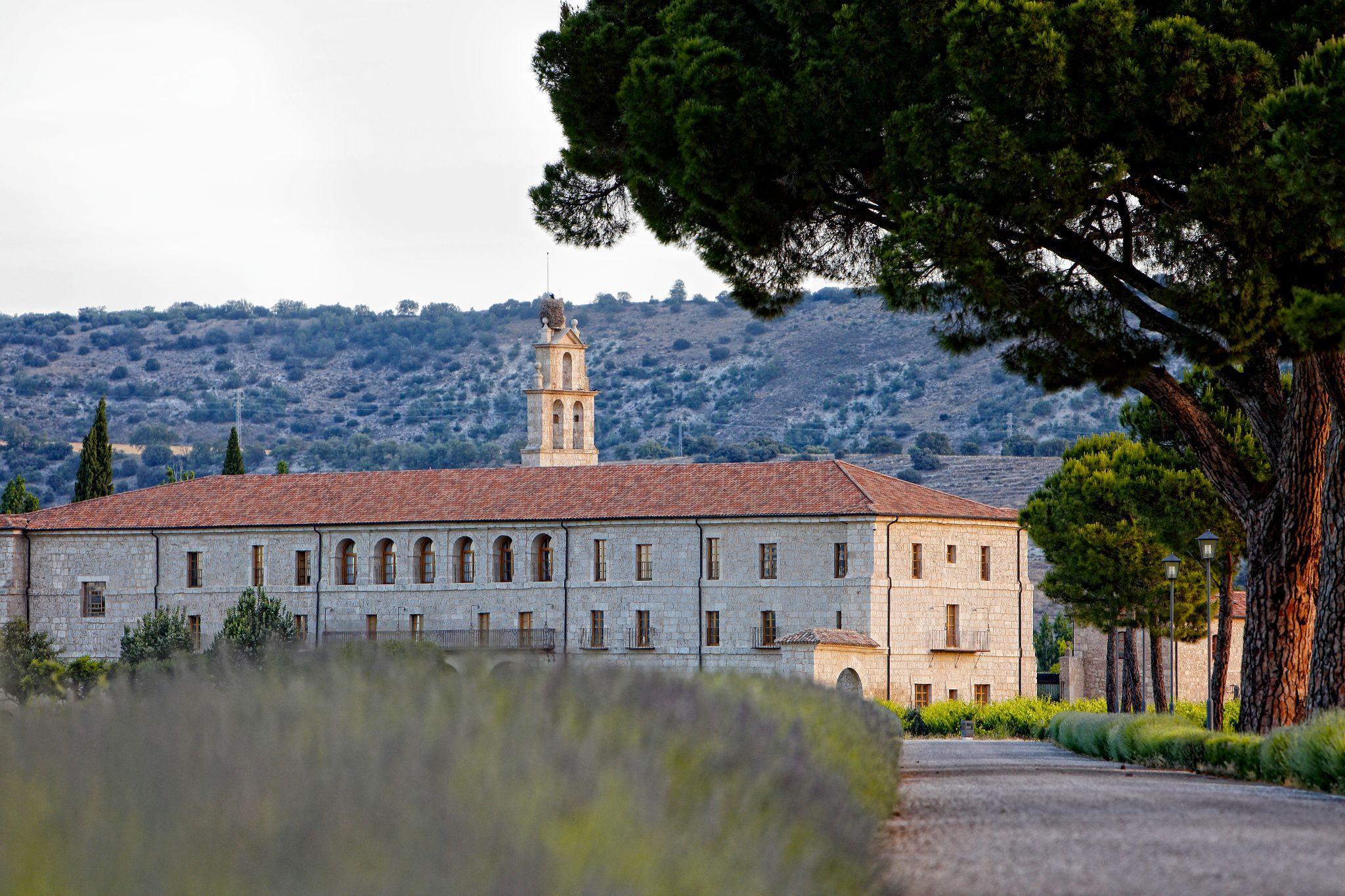

VITICULTURE�&�WINEMAKING

EXPERIMENTATION In the 90s, Abadía Retuerta began to study and recognize the effects of climate change. Varieties that could fare well and be blended with their flagship Tempranillo, like Touriga Nacional, Garnacha and others were planted. The longer cycle of these varietals preserve acidity, and are better adapted to heat and dry environments. They also found an ancestral, pre-phylloxeric variety of Tempranillo surviving in their pine forests. These vines had managed to overcome frosts, fogs, droughts, diseases and are thus adapted specifically to Abadía Retuerta. Those vines are currently being recovered and propagated and will be called Tempranillo Abadía Retuerta.

MICRO-VITICULTURE AND MICRO-VINIFICATION All 54 parcels are independently cultivated, hand-harvested and selected at sorting tables and vinified separately to preserve terroir identity. Native yeast is used for alcoholic fermentation and natural bacteria for malolactic. They practice minimal intervention and adapt all winemaking practices to respond to the nuance of each vintage.
GRAVITY FLOW WINEMAKING The estate’s patented vinification method makes use of gravity in order to achieve a more natural, delicate handling of the grapes, careful to maintain the character of each variety. This follows their general winemaking philosophy, which is driven by the desire to harvest at the right moment to maintain a natural acidity that brings freshness, balance, and fineness of tannins.
Therearemorethan25red and white grape varieties plantedinAbadíaRetuerta’s experimental plots. They willbestudiedovertimeto see how they adapt to the terroir and changing climateconditions.
How�is�the�terroir�reflected�in�the� wines�of�Abadía�Retuerta?
Soils are extremely varied, which allows Abadía Retuerta to maintain homogeneity and consistency in the vintages. The wines show balsamic aromas, almost menthol from the surrounding scrubland, rockrose,aromaticherbs,andpines.

The dry continental climate makes for deep complexity in mature fruit that yield wines of color andconcentration.

Delbeck and Anocíbar carried out an extensive study of climate and soils, revealing a great diversity of microclimates and soils within the farm. The farm is divided into 54 different plots depending on: soil composition,variety,andexposure.
ABADÍA�RETUERTA
PORTFOLIO:�Abadia Retuerta
Selección Especial; Pago
Negralada; Pago Garduña; Pago
Valdebellón; Petit Verdot; Blanco


LeDomaine; Cuvée Palomar
Pago�Negralada�
The Terroir of the 4 most singular plots (Negralada, Garduña, Valdebellón, and Petit Verdot) are the perfectbalanceofsoil,microclimate,andvariety.
Singularities�of�the�winery
Abadia Retuerta is one of the oldest wineries in Spain, and in Europe. Today, the 12th century abbey is a also designated National Patrimony site, and home to a five-star hotel with luxury spa and one-star Michelin restaurant, Le Domaine.
Why�is�Abadía�Retuerta�a�Grandes� Pagos�de�España�winery?
GPE provides the support to Abadia Retuerta’s in its mission to recover the historical splendor of this estate,
16 months French oak
Pure Tempranillo from the Duero. Deep gravel soils with sand on the surface. Distinctive firm, tannic character.
Selección�Especial
DOP Abadía Retuerta
Varieties�(2018�vintage)
77% Tempranillo, 12% Cabernet Sauvignon, 9% Syrah, Merlot, Petit
ABADíA�RETUERTA



Monastery of Santa María de Retuerta 47340 Retuerta
12 months American and French
Valladolid ABADIA-RETUERTA.COM
Mainly Tempranillo with other varieties. A signature blend with

Abadía Retuerta
DOP
����@ABADIARETUERTA�
Contact:�Álvaro�Pérez�Navazo� a.perez@abadia-retuerta es
Founded in 1998, Bodega Numanthia is located in Valdefinjas, Castilla y León, in the Northwest of Spain. It was one of the first estates to realize the potential of the Toro region, an outstanding terroir known for its beautiful expression of the timeless Tinta de Toro variety. The vineyard is composed of 494 acres of vines in the communes of Toro, Morales de Toro, Valdefinjas, Venialbo, El Pego and Argujillo. Bodega Numanthia is dedicated to making wines that honestly reflect the diversity of their vineyards.

SINCE�2013

KEY�FACTS
CLIMATE: Extremetemperaturesinthe winterandsummer.TheinfluenceoftheDuero Rivercreatesperiodsoffogduringthewinter; summersbringashortageofrainfall.
ELEVATION:�2,133feetto2,625feet (650to800m)
SOILS: Gravelandsandwithclaysubsoil
CLASS: DOToro
HISTORY
Bodega Numanthia is a living tribute to the fearless warriors of Numancia, whose inhabitants heroically resisted the Roman army for 20 years in 134 B.C., preferring to sacrifice their lives rather than surrender.


This resilient spirit extends to the region’s long-standing traditions in winemaking and viticulture. The vineyards were planted by enterprising families centuries ago during the Roman era. The vines have survived the phylloxera plague during the late 19th Century and the region’s naturally extreme climate conditions. During the Middle ages, Toro wines were also the first to travel to the Americas on Christopher Columbus’ voyage in 1492.

VINE: 494acres(200ha)in150parcels throughoutToro
KEY�VARIETALS:�TintadeToro





ECO: Certifiedorganic Vinesare dry-farmedandmanagedwithout pesticidesorherbicides
INNOVATE: Thevineyardiscertified organicandthewinery’s40acresof organicallygrownpineforestpromote biodiversity


viticulture and enology.
Vineyard Manager Alejandro Vicente, is a native of Toro and worked on his family farm before studying agriculture engineering and enology.
Finally, Winemaking and Sustainability Manager Marine Roussel grew up near Montpellier, France, in the heart of Pic Saint-Loup. She worked in several wine regions, including Pommard, Bordeaux, Napa Valley, and Mendoza.



SUSTAINABLE�VALUES
Numanthia’smissionistopreservethenatural and centenarian cultural patrimony of Toro region. All old vineyards are managed organically. So far, they have certified 287 acres (116 ha) and are planning to reach 100% organic certified by 2024. To protect their ecosystem, they encourage and preserve biodiversity through a collaboration with GREFA (Grupo de Rehabilitación de la Fauna Autóctona y su Hábitat), a non-profit wildlife advocacy group. Bodega Numanthia
TERROIR


Bodega Numanthia benefits from the widely varied climate of DO Toro. The region has eight different terroir types, and is known for its semi-arid climate with harsh winters and hot summers. With the Douro River running through the north of the area, the vineyards experience periods of fog that help cool off the grapes during the brutally hot summers. Wide diurnal temperature shifts also allow the grapes to maintain their acidity and balance.
The gravel and sand soils contain little organic matter. This,coupled with a climate that is prone to long periods of drought with little rainfall, provides a stressful environment for vines. This is key to the highly complex, concentrated and full-bodied wines DO Toro is known to produce.



The land is populated with a vast range of flora and fauna including orange, fig, olive, prickly pear, and oak trees. A large variety ofherbs and flowers such as thyme, juniper, rockroses, and broom all contribute to the character of Numanthia’s wines.

BodegaNumanthia’swinesarenamedafter theCeltiberianvillagesaroundNumancia. Differentelementsofthewinepackaging areinspiredbyobjectsdiscoveredduring thelocalarchaeologicalexpeditionsinthe cityofNumancia.
VITICULTURE�&�WINEMAKING


VITICULTURE Bodega Numanthia is composed of 200 hectares (494 acres) of vines in the villages of Toro: Morales de Toro, Valdefinjas, Venialbo, El Pego and Argujillo. Vines are between 70 and 200 years-old; the un-grafted vines are goblet-trained to protect them from long periods of drought and extended sun exposure. The lack of rainfall and irrigation force vine roots to grow up to five meters into the earth to reach water. This deprivation results in low-yields with highly-concentrated,thick-skinnedfruit.Theaverageyieldis1,600lbsperacre(1,800kgperha).

WINEMAKING Each of the 150 plots are manually-harvested between the first weeks of September and early October, after they have been individually confirmed to be at their optimal maturity. Grapes are selected with an optical sorter and then see a 4-5 day period of cold prefermentative maceration. Extended maceration on the skins after fermentation in eithernewFrenchorneutralFrenchoakbarrelscreatealushtextureonthepalate.BodegaNumanthiafocuseson“infusion ratherthanextraction”toachievethebalanceofpowerandelegance.
Numanthia is a wine crafted to reflect the diversity of the Toro terroir and is blended from 100 plots. After 18 months in Frenchoak,itisbottleagedatthewineryfor5yearsbeforerelease.TermanthiaisanexpressionoftheTintadeTorogrape fromselectparcelsoftheiroldestvines.Itspends22monthsinFrenchoak,followedby5yearsofbottleaging.
Most of Numanthia’s vines are between70and200years-old. An exceptional plot of 4.8 hectares (10 acres) located in Argujillowasplantedmorethan 120 years ago, and some select vines have been dated as far backas200years.Localfamilies have cared for these plots for generations, and work closely with the team at Bodega Numanthia.
How�is�the�terroir�reflected�in�the� wines�of�Bodega�Numanthia?
The wines of Bodega Numanthia have a rare duality of expression that is both warm and fresh. They evoke fresh herbs such as thyme, mint and eucalyptus, as wellasredfruit,licorice,cinnamonandpepper.


The wines are all from Tinta de Toro; a strain of Tempranillo that thrives in the gravel, sand and clay soils of the region. The plant’s fight for nourishment due to soil conditions and low rainfall yields thick-skinned, highly concentrated fruit known as “the blackest of black grapes”. This fruit becomes full-bodied,fruit-forwardwinethatisalsoquiteearthy.
BODEGA�NUMANTHIA� PORTFOLIO:
Numanthia, Termanthia
Numanthia
DO Toro
Varieties
100% Tinta de Toro
Vinification
18 months in French oak 225L and 400L barrels. 60% new barrels, 40% second use
Good�to�Know
Sourced from ungrafted vines that are 70+ years-old
Singularities�of�the�winery
Working hand-to-hand with local families, Bodega
Numanthia manages its vineyards through organic practices, striving to preserve, protect and nourish the heritage of the land. The estate proudly produces wine using 100% Tinta de Toro, a variety thathasgrownheresincethe2ndCenturyB.C.



Why�is�Bodega�Numanthia�a� Grandes�Pagos�de�España�winery?
BodegaNumanthiaisfullyalignedwiththemission ofGrandesPagosdeEspaña:todefendtheunique personalityofestatewinesandtosharetheirculture anduniqueness.

ermanthia
DO Toro
Varieties
100% Tinta de Toro
Vinification



22 months in new French oak barrels; racked every four months
Good�to�Know
sourced from un-grafted, 120+ year old vines.
NUMANTHIA
@BODEGANUMANTHIA
NUMANTHIA.COM�
Contact:� contact@numanthia.com
Real�s/n� 49882�Valdefinjas,� Zamora
Mustiguillo

is a family winery located in the Valencian highlands on the El Terrerazo estate Here, vines grow in a unique microclimate equally influenced by the nearby mountains and Mediterranean sea, making Mustiguillo unlike any other estate in the South. Focused on the recovery and celebration of native varieties such as Bobal and Merseguera, the estate is proudly regionally-focused and terroir-driven. From thorough soil studies to careful organic viticulture and explorations in biodynamic farming, the winery is at the forefront of new and exciting experiments in Spanish wine.


SINCE�2004
KEY�FACTS
CLIMATE: Continentalclimatewith Mediterraneaninfluence.Avg.temperature56° F(14°C),precipitation 17in.(438mm)
ELEVATION:�ElTerrerazo2,690ft(820m), FincaCalvestra3,018ft(920m)
SOILS: ElTerrerazo:calcareoussoilsof dolomiticorigin,sandy-loamtexture FincaCalvestra:limestone, silty-sandytexture ofalluvialorigin,smallplotwithmarls
CLASS: DOPTerrerazo
HISTORY
Mustiguillo was founded on estate built in the 19th century and acquired by the Sarrión family in 1970. Yet, it's not until Toni Sarrión left his career in business administration and dedicate himself to winemaking that Mustiguillo as we know it today took shape. Mustiguillo is the pioneer and current benchmark for quality Bobal. In 2004, Quincha Corral 2001 was the first 100% Bobal wine rated by Robert Parker (95 points), while Decanter recognized Finca Terrerazo in 2014 as the best Spanish wine under 25£. In 2019, Mustiguillo celebrated the centenary of Terrerazo 1919, the first vintage produced at the estate and documented at the time by famed enologist and agricultural engineer Rafael Janini.


VINE: 264acres(107ha)across47plots

KEY�VARIETALS:�Bobal,Merseguera






ECO: EUcertifiedorganic.Eliminationof allplasticsinwarehouseandpackaging
INNOVATE: Conductingsoilanalysis, experimentingwithbiodynamicsand sustainablepracticeslikeusingsheepand theirowncomposttofertilizevineyards

Mustiguillo practices 100% organic viticulture,withemphasisonconservingthe flora and fauna of the environment. To encourage soil health, they use natural compost of manure with pulverized pruned leaves and canes, as well as soil treatments such as tillage in alternate rows and vegetable cover crops. The cover crops are mixed (spontaneously mixed with fescue seeds, bromus and vetch) and defined according to the plot, variety, type of wine and winter rainfall. This helps encourages thevinestocompeteforresources.
THE�TEAM
With his passion and dedication, Winemaker Toni Sarrión is the heart of the winery. He has earned the nickname “Mr. Bobal” thanks to his efforts to promote thisnativevariety..
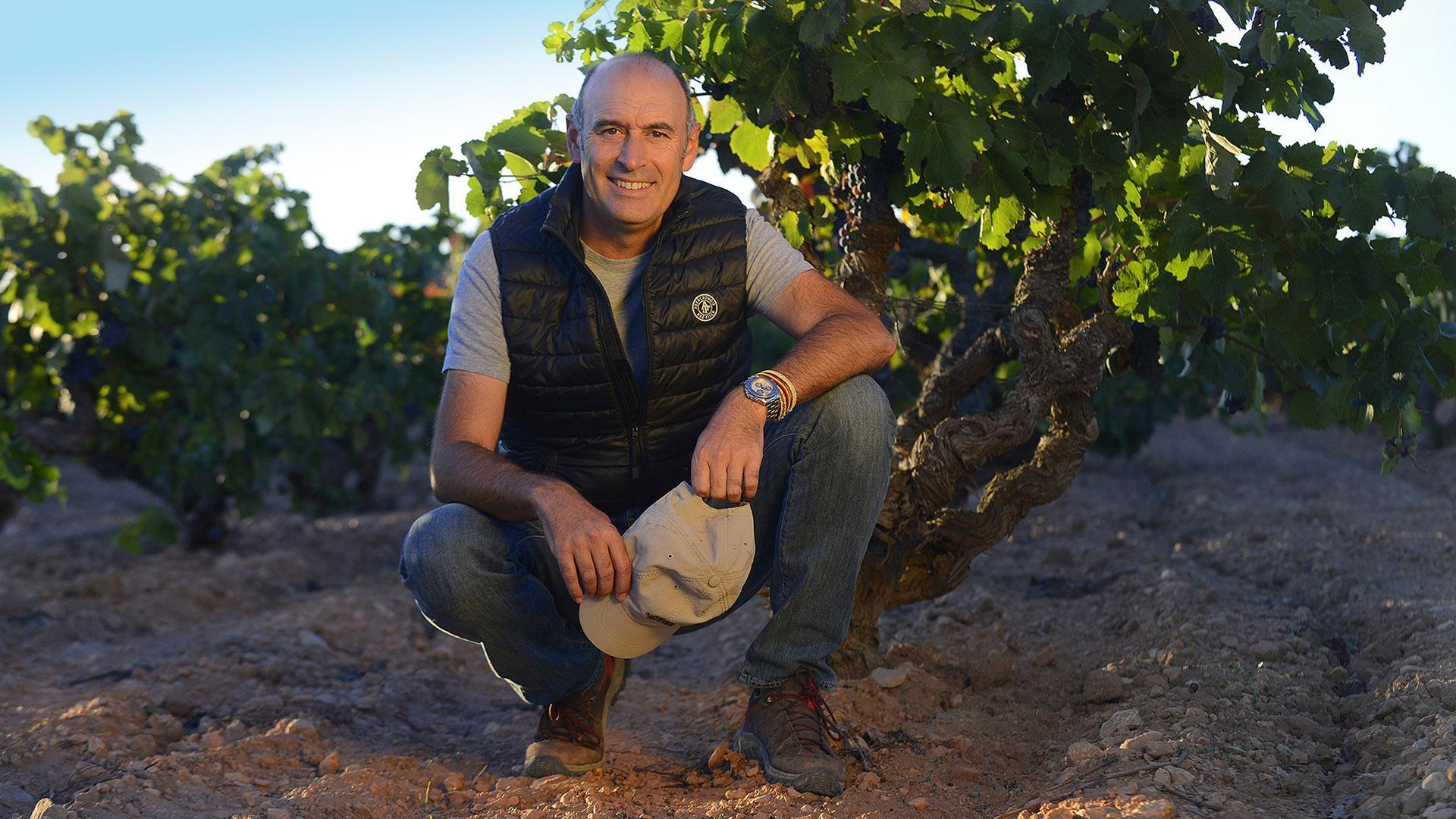
The viticulture team is led by Irene Garcia and Fernando Garcia with a focus on biodynamic practices. Isabel Cano is the second winemaker leading day to day operationsandputtingintopracticeToni’sphilosophy.

Winemaker: ToniSarrión
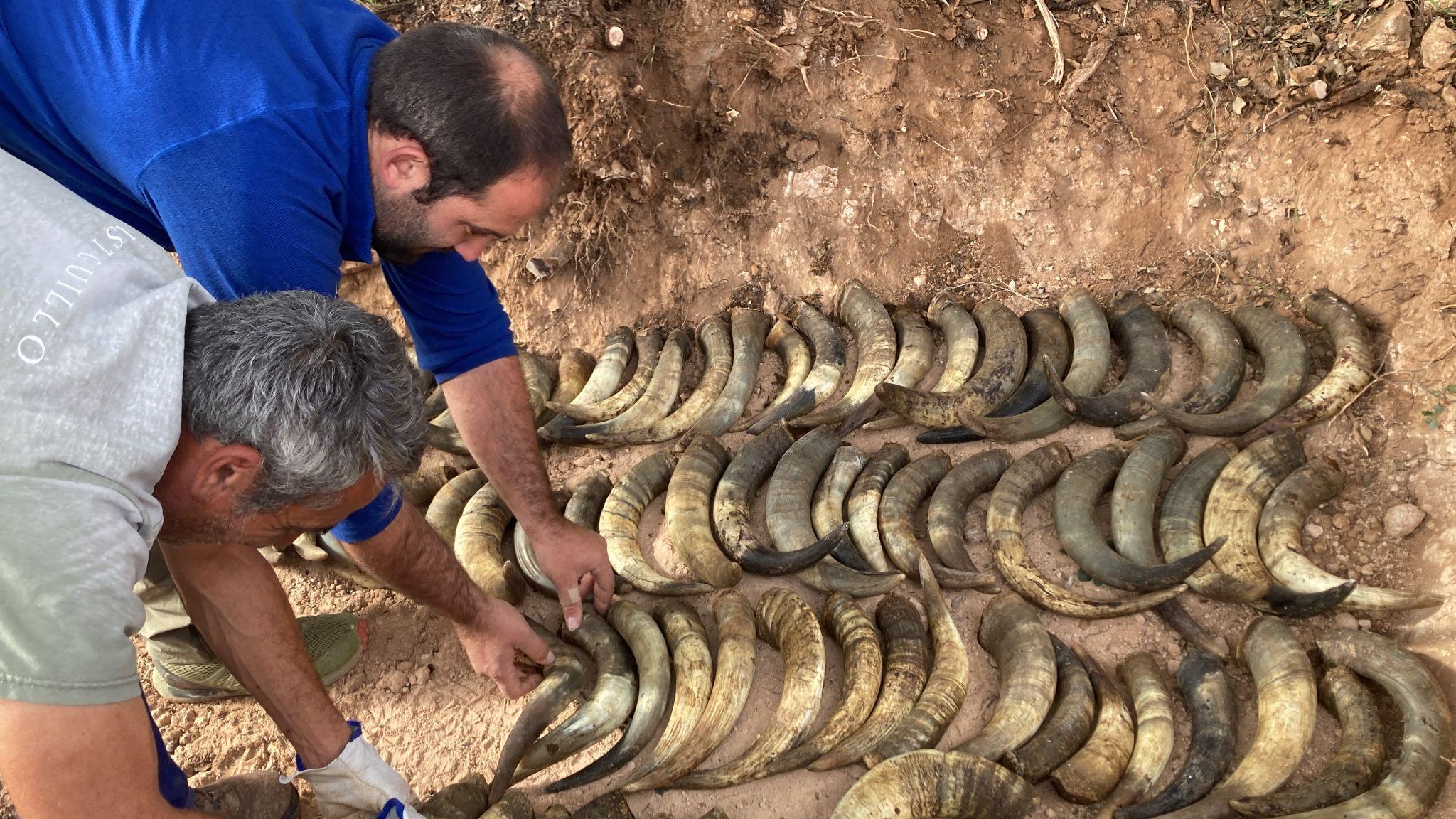
TERROIR



Thevineyardsarelocated63miles(100km)inlandfromthe MediterraneanonthewesternedgeofValenciaprovince.

PagoElTerrerazoandFincaCalvestrasitat2,690ft.(820m) ontheedgeoftheSierradeNegrete,wheretheCastilla highlandsreachtheborderofValencia.Here,theextreme continentalclimateisgraduallyinfluencedbythemilder Mediterraneanconditions,resultinginhighoscillationof diurnaltemperatures(+-68ºF,20ºC).

ElTerrerazorestsonalimestonelayerofDolomiticorigin.The soilsaregenerallyhomogeneous,butincludeloamypatches withremarkablealkalinity,orpocketsofsand.ToniSarrión prioritizedunderstandingthesoilcompositionfromthe beginning,openingtestpitstoobserveeachplotandidentify thosewiththepotentialforsingle-parcelexpression,like FincaCalvestraMargas.
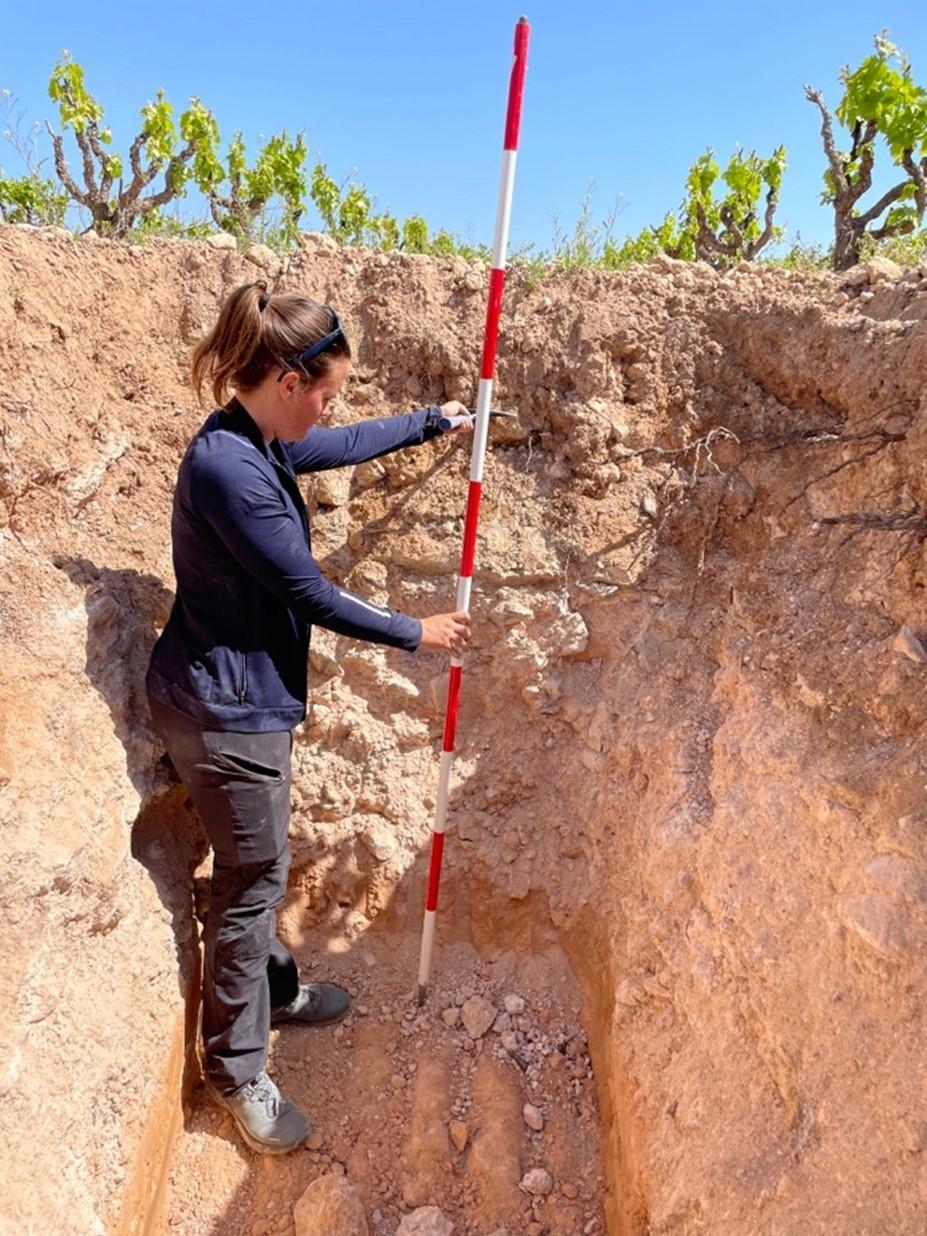
GOOD�TO�KNOW
In 2010, DOP El Terrerazo became the first single estate denomination in the Mediterranean region.
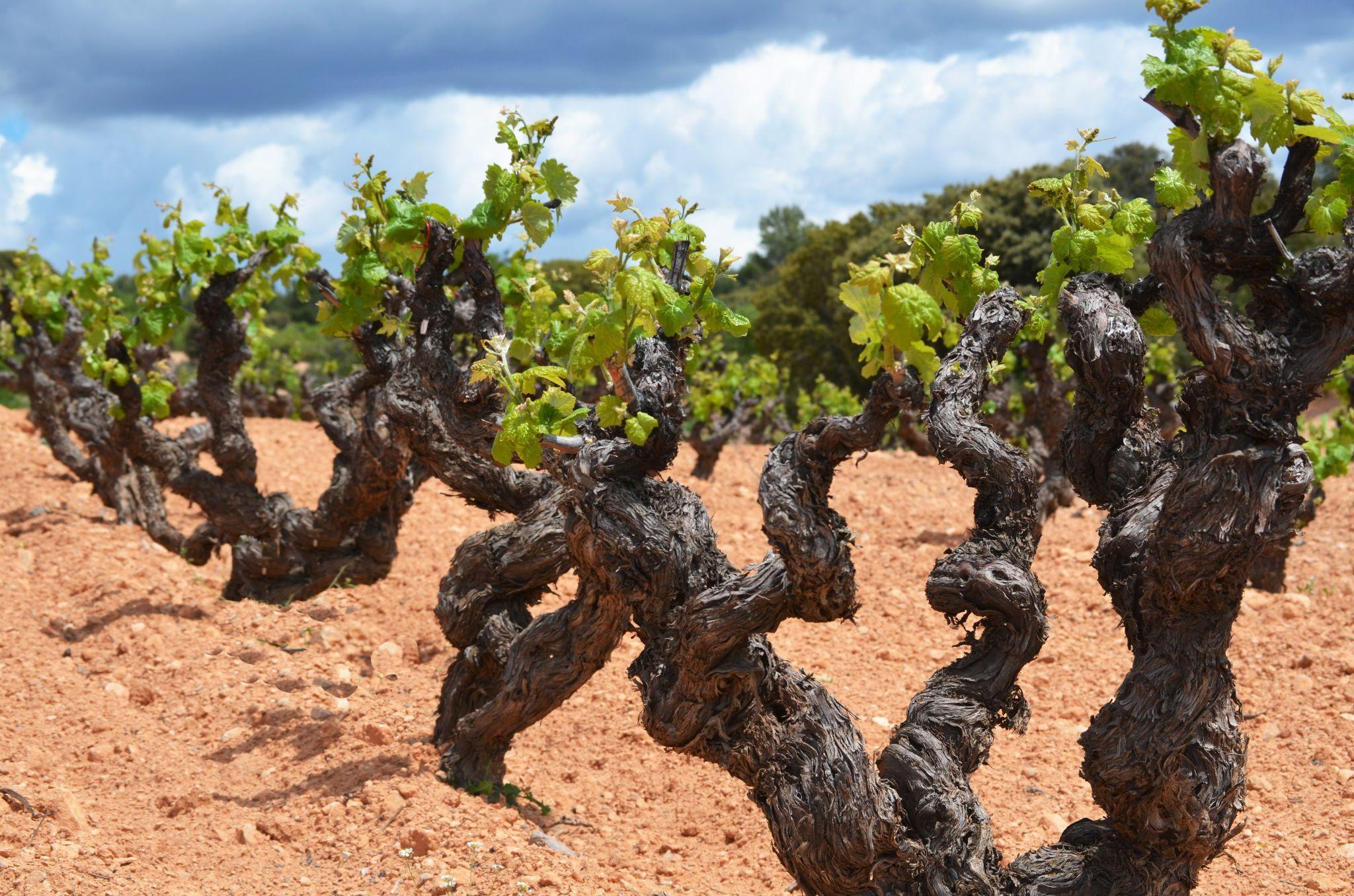
VITICULTURE�&�WINEMAKING

NATIVE VARIETIES
Mustiguillo focuses on expressing origin by working with native grapes like Bobal and Merseguera, believing that these grapesbesttransmitagenuinesenseofplace.BeforetheeffortsofMustiguillo,thesevarietieswerelargelyunderratedand seenasmoresuitableforbulkproduction.
LOW YIELDS
BobalandMersegueraarenaturallyvigorous,productivevarieties.ToniSarriónemployedmanytechniquestoloweryields; bunchthinning,covercropsanddryfarmingwereamongkeyoptionstosuccessfullycultivatehigh-qualitygrapes.
LOW INTERVENTION
Mustiguillo believes low intervention winemaking is the key to crafting the terroir-driven wines that will best express the character of their pagos. Parcels are fermented separately, exclusively with native yeasts and free-run must. Avoiding over extraction, gentle racking by gravity and use of neutral vessels like old oak or concrete for maturation will preserve the eleganceandMediterraneanflavors.
Agingpotentialisone

of Finca Calvestra’s virtues. This rare quality for a Mediterraneanwhite wine results from careful winemaking and Merseguera’s low pH. The wine’s typicity starts to show from the fourthyearonwards.
How�is�the�terroir�reflected�in�the� wines�of�Mustiguillo?
The terroir of Mustiguillo is perhaps best understood through their Bobal wines. The fruit of Finca Terrerazo is marked by the extreme climate, high elevation and its old vines, giving it a distinctive Mediterranean character, intensecolorandbalancedacidity.

Old-vine Bobal is planted among groves of pine, oak, and olive, as well as rosemary, fennel, and thyme that tingethefruit.
The expression of the limestone soil is noticeable in a slight chalky sensation on the palate, a savoriness and a verticalnose,resultinginalong,elegantwine.


Singularities�of�the�Winery
Their pagos El Terrerazo and Finca Calvestra, are a viticultural benchmark for Bobal and Merseguera. Toni Sarrión has worked to study all aspects of each individual plot individually, with a persistent curiosity tounderstandtheestate’sterroir.

Why�is�Mustiguillo�a�Grandes�Pagos�de� España�winery?
Committed to respecting the origin and typicity of their wines, Mustiguillo joined GPE to promote visibility of their unique terroir. Mustiguillo has found a home with the other GPE wineries, where all work to learn more about their land, vines and the surroundingenvironment.

MUSTIGUILLO�PORTFOLIO:

Quincha Corral, Finca Terrerazo, Finca Calvestra Margas, Finca Calvestra, La Garnacha, Mestizaje Blanco, Mestizaje
Finca�Terrerazo
DOP El Terrerazo
Varieties
100% Bobal
Vinification
Maceration, fermentation and 18 months aging in 35
HL and 50 HL French oak vats. Only free-run wine is aged
Good�To�Know
Fruit from two single plots, one planted in 1945 and the other in 1970
Finca�Calvestra
Vino de España
Varieties
100% Merseguera
Vinification�


6 hours cold maceration. Fermentation and aging in 225 and 500 L acacia barrels with native yeast. 11 months aging on fine lees
Good�To�Know
Vineyard altitude 3,018 ft (920 m). Merseguera is grafted on old, dry-farmed Bobal vines
BODEGA�MUSTIGUILLO Ctra. El Terrerazo, 330 Km 195 46300 Utiel Valencia BODEGAMUSTIGUILLO.COM �����BODEGAMUSTIGUILLO Contact:�Luis�Miguel�Pérez l.perez@bodegamustiguillo.com LEARN�MORE
As one of the only houses in Spain producing single-vineyard sherry and with a pedigree stretching back to the 13th century, Valdespino’s reputation for ethereal sherry is well-earned. Cultivating the famed Macharnudo vineyard – a high altitude plot of pure Albariza soil – Valdespino’s sherry is deeply expressive of place and history. Now a part of the esteemed Grupo Estévez (Marqués del Real Tesoro and La Guita), Valdespino is rightly known as the high water mark for sherry production.



SINCE�2011
KEY�FACTS
CLIMATE: Warm southern climate with Atlantic influence. Average annual temperature 68°F (18°C)

ELEVATION:�443 feet(135m)
SOILS: Albariza–calciumcarbonate,clayand silicaandsubsoilchalklayer
VINE: 407 acres (165 ha) in total, 49 acres (20 ha) are GPE approved

KEY�VARIETALS:�PalominoFino






ECO: 20 acres (8 ha) certified organic vineyard
CLASS: DOJerez-Xérès-Sherry
HISTORY
Valdespino is one of the oldest wineries in Jerez, whose origin reaches back to the 13th century. For his service in the Reconquest of Jerez de la Frontera, Don Alfonso Valdespino was granted lands and estates where he began cultivating vines. The estate as we know it today was incorporated in 1875. In the 19th and 20th century, Valdespino earned international acclaim, becoming official purveyors of Spanish and Swedish royal families. In 1999, Valdespino was acquired by the Estévez family, owners of the La Guita and Marqués del Real Tesoro wineries.
INNOVATE: The only winery in Jerez still making single vineyard and barrel fermented wines


SUSTAINABLE�VALUES
Valdespino has 20 acres (8 ha) of certified organic vineyards. Treatments are kept to a minimum as Palomino is disease-resistant, and climate conditions keep vines healthy.


OUR�TEAM
Now in its second generation of Estévez ownership, Valdespino remains a family winery. The technical team (which,itshouldbenoted,isamajoritywomen)consists of11people,ofwhich9arewinemakers.

Growing up in a family that loved sherry and inspired by her grandfather who worked in a winery in Sanlúcar de Barrameda, director of winemaking Victoria Frutos pursued degrees in agriculture engineering, oenology andamaster’sinagri-foodqualitycontrol.Shehasbeen workingforJoséEstevezsince2005.
Winemaker: VictoriaFrutos
TERROIR

Jerez’s southern climate is shaped by the influence of the Atlantic Ocean. The westerly wind brings ocean humidity, watering the vineyard during the early morning. Average annual rainfall is 24 inches andconcentratedbetweenOctoberandMay.
Macharnudo is arguably Jerez’s greatest vineyard. Its privileged position on a line of hills has a southwest orientation on a 10% slope to take advantage of the cooler western winds and protectingitfromthewarmeasterlywinds.



The soil of the vineyard is the archetype of the typical Albariza, rich in calcium carbonate (containing up to 40%), clay and silica. Thanks to its high levels of calcium carbonate, its clay texture does not crack. It absorbs rain like a sponge. Then because of the high heat, the soil forms a crust as it driesthatpowerfullylimitsevaporation.


VITICULTURE�&�WINEMAKING

MACHARNUDO Valdespino is one of the only Sherry Houses in Spain to make wines from a single vineyard. Vines have been grown in Macharnudo Alto since the 13th century, and was well-known for its exceptional qualities by the 19th century. Today, this vineyard is the exclusive source for Marcharnudo Barrel Fermented, Fino Inocente, Amontillado Tio Diego,PaloCortadoCPandPaloCortadoCardenal.
EXCEPTIONAL WINEMAKING AND AGING Torespecttraditionandtheuniquecharacteroftheirgrapes,Valdespinogoes above and beyond in all phases of production. For example, in contrast to most houses in Jerez who do the fermentations in stainless steel and inoculate the flor (yeast veil) to influence final style, Valdespino wines are barrel-fermented in reused oakbarrelsandallowedtodecidetheirdestinynaturally.
While DO regulations require for a fino sherry to have a minimum of 2 years, Valdespino’s Fino Inocente, which has 10 criaderas, has an average of 10 years under the flor. The additional aging gives the wines a complexity and texture that standsapartfromanyotherfinointhefield.AmontilladoTioDiegoalsohasanexceptionalaverageageof17years.
In 2015 Valdespino first produced a still white wine from the Palomino in Macharnudo as an experiment. Today, Marcharnudo Barrel Fermented is a part of their single-vineyard bottlings, and carries the minerality and salinity that this pago is noted for.


How�is�the�terroir�reflected�in�the� wines�of�Valdespino?
The calcium carbonate in the Albariza soils of Macharnudo produce very mineral wines. They are savoryandsalinewithlongpersistence.
AnotherkeypartofValdespino’scharacteristheir velode flor. Composed of yeasts inherent in the atmosphere and impregnated in the barrels, is unique to the conditions of thewinery.Thecharacterthattheyconferonthefinoand amontillado are unmistakable. This long-lived, allowing Fino Inocente to spend up to 10 years being influenced by it. This long biological aging process allows them to create Amontillado Tio Diego without adding alcohol to provoke the transition to oxidativeaging.Eventually,the

dies from lack of nutrients, allowing the oxidative phase toinitiatenaturally.
Singularities�of�the�Winery
Fino Inocente from the Macharnudo pago is the only Fino still fermented in 500 L oak barrels, instead of the usual large-capacity stainless steel tanks. It is also one of the only wines that has 10 criaderas, instead of the 2 or3thatotherwineriescurrentlyhave


Why�is�Valdespino�a�Grandes�Pagos�
VALDESPINO�PORTFOLIO:
Fino Inocente, Amontillado Tio Diego, Palo Cortado Viejo CP, Palo Cortado Cardenal V.O.R.S.
FINO�INOCENTE
DO Jerez-Xérès-Sherry
VARIETIES
100% Palomino Fino
VINIFICATION
Fermentation in oak barrels. Biological aging, average 10 years
GOOD�TO�KNOW
Passes through 10 criaderas and soleras
AMONTILLADO�TIO�DIEGO

D.O. Jerez-Xérès-Sherry
VARIETIES
100% Palomino fino
VINIFICATION�
Fermentation in oak barrels. Biological and oxidative aging, average age is 17 years
GOOD�TO�KNOW
Passes through 8 biological criaderas and 3 oxidative soleras. No second fortification to stop biological aging
VALDESPINO


Ctra. N IV Km 640
11408 Jerez de la Frontera
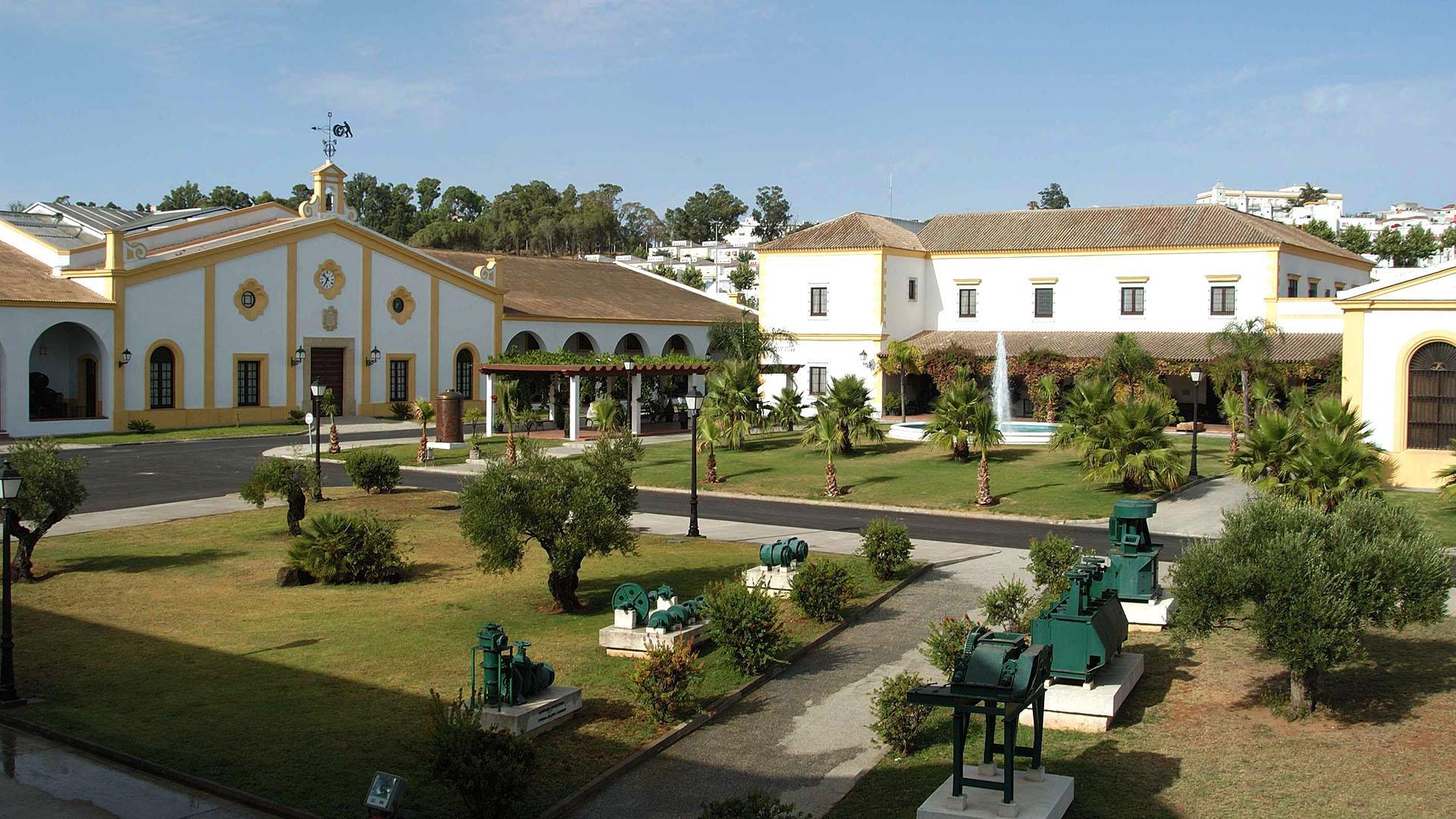
Cádiz
GRUPOESTEVEZ.ES/VALDESPINO @GRUPOESTEVEZ
Contact:�Jaime�Gil
jgm@grupoestevez.com


































































































































